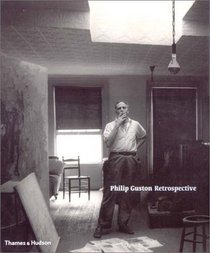Search -
Philip Guston: Retrospective
Philip Guston Retrospective
Author:
Philip Guston's early, figurative work and his mature abstractions have become much sought after by museums and private collectors, although they remain less familiar to the museum-going public than works by his friends Jackson Pollock, Mark Rothko, Willem de Kooning, Barnett Newman, and Franz Kline. At the same time, his late figurative works&#... more »
Author:
Philip Guston's early, figurative work and his mature abstractions have become much sought after by museums and private collectors, although they remain less familiar to the museum-going public than works by his friends Jackson Pollock, Mark Rothko, Willem de Kooning, Barnett Newman, and Franz Kline. At the same time, his late figurative works&#... more »
ISBN-13: 9780500093085
ISBN-10: 0500093083
Publication Date: 3/2003
Pages: 272
Rating: ?
ISBN-10: 0500093083
Publication Date: 3/2003
Pages: 272
Rating: ?
0 stars, based on 0 rating
Genres:
- Arts & Photography >> Individual Artists >> ( G-I ) >> Guston, Philip
- Arts & Photography >> Individual Artists >> General
- Arts & Photography >> Art >> Museums & Collections >> Museums >> General




